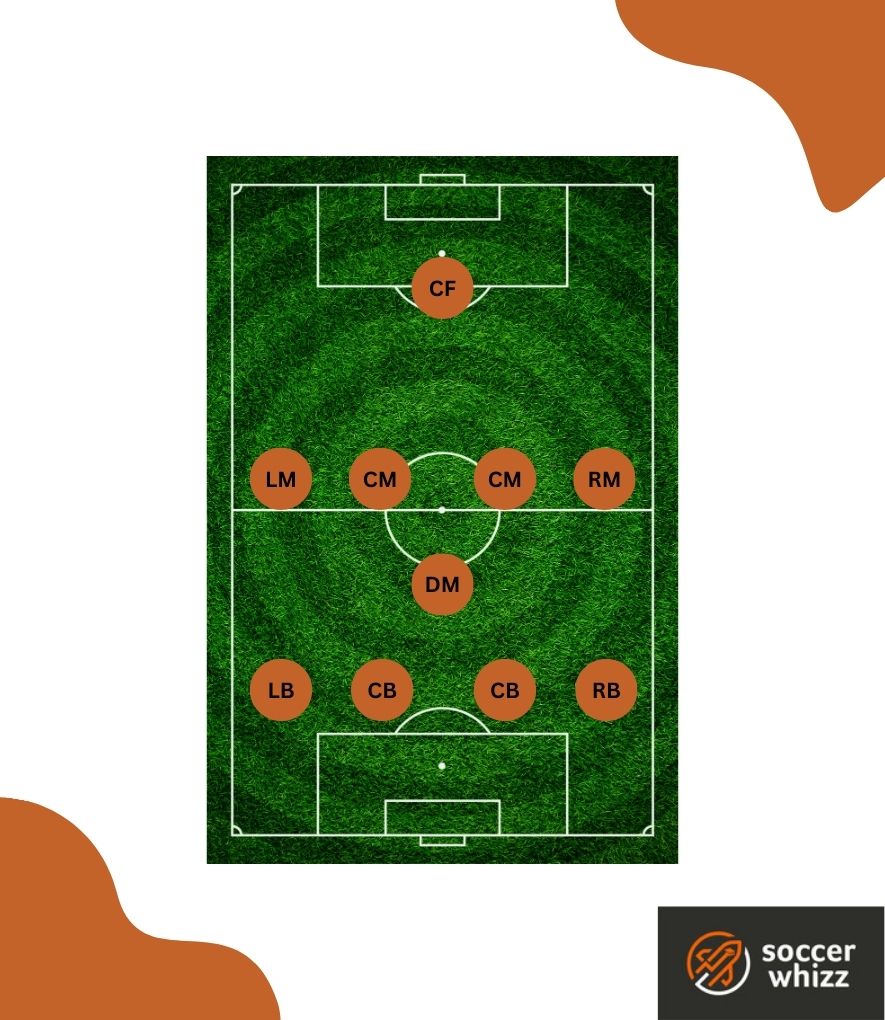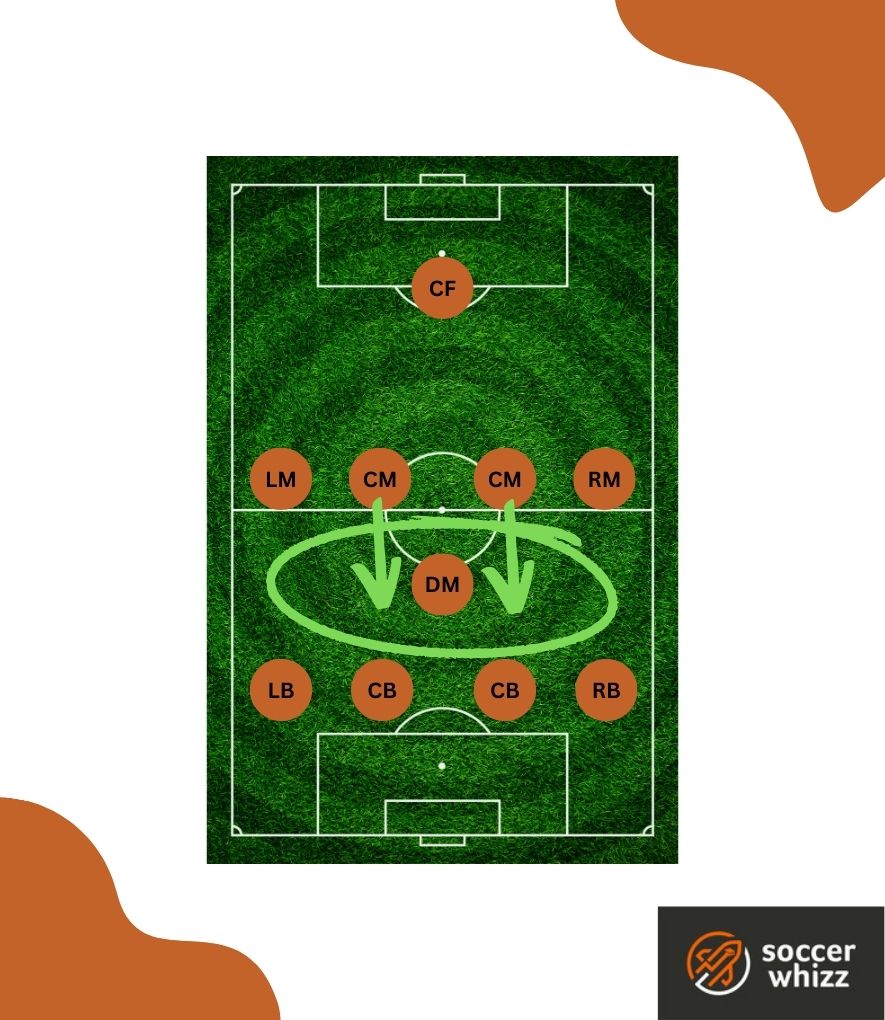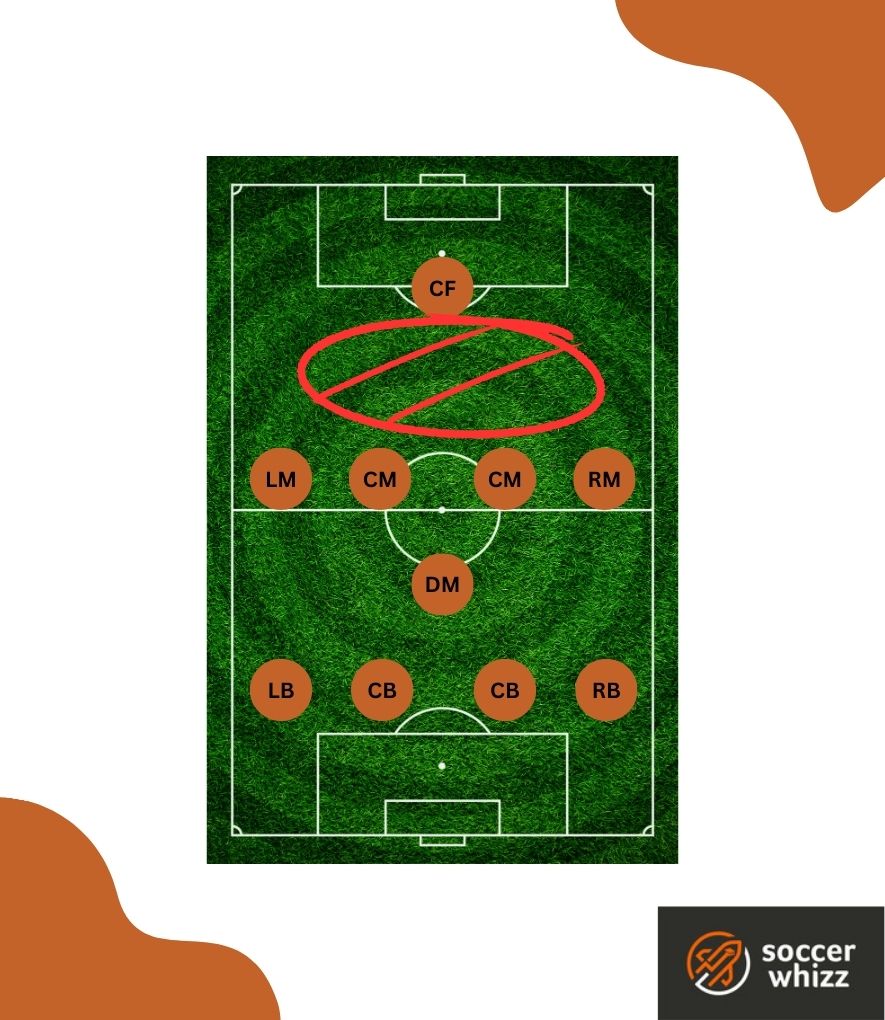In the relentless pursuit of tactical excellence, soccer coaches and teams are constantly exploring innovative formations to gain a competitive edge on the field.
Among the myriad of systems, the 4-1-4-1 formation has emerged as a captivating and versatile tactical approach that redefines team dynamics and shapes the flow of the game.
Balancing defensive solidity with potent attacking capabilities, the 4-1-4-1 formation has gained popularity across various leagues and competitions, captivating soccer enthusiasts and strategists alike.
In this article, we will delve into the intricacies of the 4-1-4-1 formation, unveiling its key principles, strategic advantages, and the roles and responsibilities it bestows upon players.
From its historical evolution to its contemporary success stories, we will explore how this tactical setup has revolutionized the way teams approach modern soccer.
- How does a 4-1-4-1 formation work?
- What are the strengths of a 4-1-4-1 soccer formation?
- What are the weaknesses of a 4-1-4-1 shape?
- Which soccer managers have successfully adopted a 4-1-4-1 system to great effect?
- Can this formation be countered to great effect?
- Is a 4-1-4-1 shape the same as a 4-3-3?
- Final thoughts
How does a 4-1-4-1 formation work?
The 4-1-4-1 soccer formation represents a modified version of the 4-5-1 tactical setup, where one of the three central midfielders drops deeper into a conservative central defensive midfield position, often referred to as the “single pivot.”
This lone pivot acts as the anchor, stationed in front of the back four, facilitating seamless transitions between defense and attack.

Unlike the 4-2-3-1 formation or 4-3-3 shape which is comprised of a flat midfield, the distinctiveness of the 4-1-4-1 lies in this solitary holding midfielder who serves as the fulcrum connecting various aspects of the team’s gameplay.
In this tactical arrangement, the team comprises a backline of four defenders, flanked by a right back, a left back, and two center backs.
Positioned ahead of the defensive line is a lone holding midfielder, while a more advanced midfield quartet consists of two central midfielders, a right midfielder, and a left midfielder.
Completing the setup is a solitary striker leading the attack.
Crucial to the formation’s success, the central defensive midfielder ensures defensive stability by shielding the defense and providing a crucial link between the backline and the midfield.
Termed as the “lone pivot” due to their pivotal role in transitioning between defensive and midfield duties, this player sets the 4-1-4-1 apart from formations like the 4-2-3-1 or 4-3-3.
The arrangement of the four advanced midfielders can vary, with the wide midfielders occasionally joining the forward line as wingers, or the attacking support predominantly provided by central attacking midfielders.
The midfield four adapts and shifts during in-game situations, striking a balance between defense and attack, while the lone striker typically remains high, leading the offensive charge and spearheading the team’s pressing strategy.
The versatility and strategic adaptability of the 4-1-4-1 formation make it a dynamic and intriguing option for modern soccer teams seeking to control midfield battles and craft an effective attacking force.
What are the strengths of a 4-1-4-1 soccer formation?
The central defensive midfielder plays a pivotal role within the 4-1-4-1 formation, boasting a diverse range of responsibilities.
This key player must possess physical combative skills, defensive prowess, and exceptional positional awareness.
Furthermore, they should be confident when receiving the ball in tight spaces and capable of delivering accurate passes to bypass the opposition press and propel their team forward.
When fortunate enough to have a player who perfectly fulfills these criteria (though they are indeed a rare find), employing the 4-1-4-1 shape allows the team to optimize their skill set.
A key strength of the 4-1-4-1 system lies in its remarkable defensive solidity, as it targets the space in front of the back four and positions a defensively-oriented player to thwart opponents in these critical areas.

This strategic approach forms the bedrock of a highly effective defensive strategy.
Moreover, the 4-1-4-1 allows teams to assert dominance in the midfield battle.
Possessing three central midfielders, along with advancing full-backs and wide midfielders, provides an overwhelming numerical advantage to overpower opposition midfields and take control of the game’s most vital region.
In possession, the formation’s flexibility comes to the fore, as the midfield four can switch to an extremely offensive stance in specific situations, showcasing the remarkable sense of balance this formation offers.
This tactical versatility allows teams to dictate play and seize control of the game from the center of the pitch.
What are the weaknesses of a 4-1-4-1 shape?
One of the notable drawbacks of the 4-1-4-1 formation is the potential isolation of the lone striker up top.
Throughout the match, the forward must cover significant ground, applying pressure in the opponent’s half, maintaining possession, and creating chances whenever they receive the ball.

The pressure on these players to convert the few opportunities they get is immense, making their role highly demanding.
It is imperative for a team utilizing the 4-1-4-1 setup to have a clinical and hard-working striker who can effectively fulfill these roles and responsibilities.
The striker’s positioning is crucial as any gaps can enable opponents to bypass them and launch counter-attacks from deep.
Although the formation is defensively strong, minimizing these moments of pressure hinges on the striker’s ability to ruthlessly finish chances, hold up the ball, and involve attacking midfielders in the play.
Ensuring that the attacking midfielders provide offensive support is vital to prevent the striker from becoming isolated.
Similarly, the 4-1-4-1 system demands a specialist central defensive midfielder, as mentioned earlier.
If the team lacks an exceptionally competent player to fulfill this role, attempting to play the 4-1-4-1 formation may not be worthwhile.
The success of this tactical setup relies on having players who can effectively execute their roles, and without a skilled central defensive midfielder and a clinical striker, the formation may prove less effective in practice.
Which soccer managers have successfully adopted a 4-1-4-1 system to great effect?
Here are some iconic names…
1. Jose Mourinho
Portuguese manager Jose Mourinho has left an indelible mark on the landscape of modern European football, boasting an illustrious career highlighted by significant achievements.

His crowning moment came in 2004 when he guided Porto to a memorable UEFA Champions League triumph.
Notably, his tenure at Chelsea showcased his tactical brilliance, leading a star-studded team featuring the likes of Frank Lampard and Didier Drogba.
Central to his success at Chelsea was the implementation of a 4-1-4-1 formation, strategically designed to optimize the team’s strengths.
Mourinho entrusted Claude Makelele with the pivotal role of a disciplined defensive midfielder.
Positioned just ahead of the defensive line, Makelele’s exceptional positional awareness, unyielding confidence on the ball, and tenacious tackling prowess allowed him to flourish in this critical position.
2. Pep Guardiola
At Manchester City and previously at Barcelona, Guardiola has showcased his ingenuity by employing a tactical maneuver that involves one of the central midfielders dropping back, effectively shaping a 4-1-4-1 formation.

This strategic move bolsters his team’s prowess in possession and grants “free 8s” like Kevin de Bruyne or David Silva the freedom to venture into more advanced midfield spaces.
3. Mikel Arteta
Arteta’s implementation of the 4-1-4-1 formation at Arsenal features a refreshing offensive mindset.

With Thomas Partey or Declan Rice anchoring the midfield as the defensive pivot, he employs Kai Havertz and Martin Odegaard in more advanced positions.
This daring approach has shifted the perception of the 4-1-4-1 formation, demonstrating its adaptability and versatility as a tactical setup that can cater to both defensive stability and attacking prowess.
Under Arteta’s guidance, the 4-1-4-1 has evolved into a dynamic and intriguing system, showcasing how innovative coaches can reshape traditional formations to suit their team’s strengths and playing style.
Can this formation be countered to great effect?
To neutralize the effectiveness of the 4-1-4-1 formation and capitalize on your own attacking strengths, one effective strategy is to exploit the opposition team’s weakest defender.
By strategically matching your most creative players against this defender, you can apply pressure and create scoring opportunities.
In addition to player selection, movement plays a pivotal role in confusing the defensive line, which is a cornerstone of the 4-1-4-1 formation.
Coaches should encourage their players to roam between different areas of the pitch, swapping positions frequently to disrupt the opposition defense and create chaos.
The fluidity in movement keeps the defensive shape guessing and opens up creative opportunities.
Diversifying the types of passes, runs, and dribbles performed by your attacking players further amplifies this unpredictability.
Changing the tempo of the play adds an element of surprise to your attacks, making it challenging for the opposition to anticipate your team’s next move.
Keeping the opponents unsure about your build-up play diminishes the organizational strengths of their 4-1-4-1 formation, weakening its effectiveness to some extent.
By embracing a versatile and unpredictable approach, your team can maximize its attacking potential and dismantle the structure of the opposing 4-1-4-1 setup.
Is a 4-1-4-1 shape the same as a 4-3-3?
While the 4-1-4-1 and 4-3-3 formations may share some similarities, they are not the same and have distinct tactical differences.
The 4-1-4-1 formation typically consists of four defenders in the backline, a single defensive midfielder (CDM) in front of the defense, four midfielders forming a line ahead of the CDM, and a lone striker leading the attack.
This setup is often seen as more defensively compact, with the central midfielders adopting slightly deeper positions to offer additional defensive support.
On the other hand, the 4-3-3 formation also comprises four defenders in the backline.
However, instead of a single CDM, it features a central midfield trio, with one holding midfielder and two more advanced midfielders.
The front three consist of two wingers (wide forwards) flanking a center forward.
The 4-3-3 formation is often viewed as more attacking and dynamic, with the emphasis on the wide players to provide offensive width and create goal-scoring opportunities.
The key distinction lies in the midfield setup.
The 4-1-4-1 has one central defensive midfielder, while the 4-3-3 has three central midfielders.
Additionally, the positioning and roles of the midfielders differ, influencing the formation’s overall style of play.
While both formations have been used successfully by various teams, they offer distinct tactical advantages and suit different playing philosophies.
Final thoughts
Ultimately, the 4-1-4-1 soccer formation stands as a versatile and intriguing tactical setup that has evolved significantly over time.
Its balance of defensive solidity and attacking potential has made it a popular choice among many coaches and teams seeking tactical excellence on the field.
However, like any formation, the 4-1-4-1 requires a cohesive and skilled team that can adapt and execute the tactical plan effectively.
The isolation of the lone striker and vulnerability in wide areas are challenges that must be managed to optimize the formation’s potential.
If you enjoy the content that I create and would like to buy me a coffee, then I’d really appreciate it!
Any money that I earn through this donation will be re-invested into more content for this website.
Additionally, by sending in a donation you’ll also receive a copy of my recently released 190+ page eBook on Soccer Ball Care, as well as be subscribed to our mailing list where you’ll be regularly informed on the latest developments concerning the Soccer Whizz blog.
- Future Icons: Europe’s Emerging Midfield Maestros Set for Glory - December 4, 2023
- Kickstarting a Revolution: How Soccer Transformed the United States Over the Last Four Years - October 7, 2023
- 4-1-4-1 Soccer Formation [Analysis] - September 23, 2023

